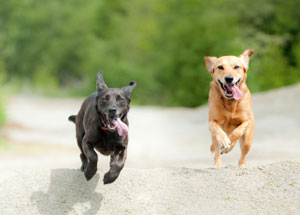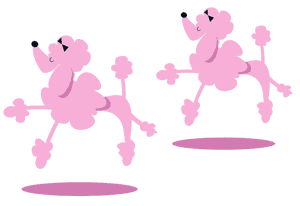Imagery in Action
Look at the sentence below.
Sentence #1:
The dogs went down the street after the boy.
Are the dogs chasing the boy, or are they all in a row—one after the other behind the boy? We don’t know because we don’t have enough information to finish the picture in our heads. If you’re reading the sentence, you might picture a boring street with a young boy in short pants being followed by several brown and white spotted dogs. Most of what you see as you read is a result of your own creation and not the writer’s words.
Using imagery adds detail to the writing that helps to create vivid pictures in the reader’s head. These details are usually words relating to the five senses: sight, sound, touch, taste, and smell. Now let’s add some sensory words to the sentence above.

Sentence #2:
Two hairy dogs chased the little boy down the street as he furiously pedaled his shiny silver bicycle.
Now read sentence #3. Both sentence #2 and sentence #3 begin with the same sentence starter, but because of word choices the writer makes, the pictures you visualize in your head are very different for each sentence.

Sentence #3:
Two French poodles pranced down the street, their top-knotted tails at attention behind them, while a small boy tugged impatiently on their jeweled leashes and scolded them in rapid French.
Choose either sentence #2 or sentence #3 and list all of the words in the sentence that help you make a picture in your head as you read.
Use your notes to write your response. When you're finished, check your understanding.
Sample Response:
Sentence #2: “Two,” “hairy dogs,” “chased,” “little boy,” “furiously pedaled,” “shiny silver bicycle”
Sentence #3: “Two,” “French poodles,” “pranced,” “top-knotted tails at attention,” “small boy,” “tugged impatiently,” “jeweled leashes,” “scolded,” “rapid French”
Close